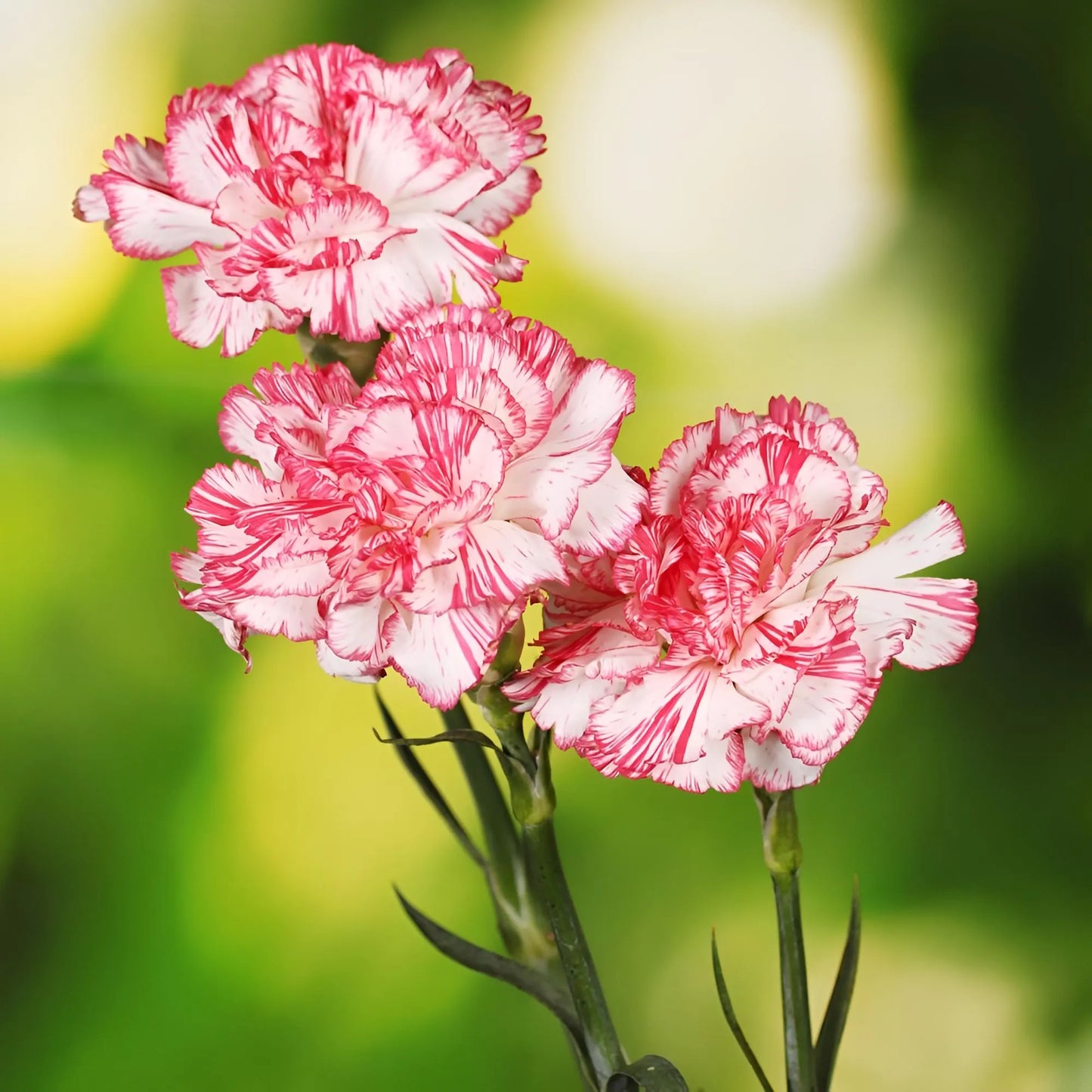Carnation- Raspberry Ripple
Couldn't load pickup availability
Description
The Raspberry Ripple Carnation brings a burst of color and elegance with its unique, bicolor blooms. Featuring delicate petals in shades of white with rich raspberry-red edges, this carnation creates a stunning visual contrast. Known for their long-lasting flowers and pleasant scent, Raspberry Ripple carnations are perfect for both garden beds and floral arrangements.
Features:
Stunning Bicolor Blooms: White petals with deep raspberry-red edges create a beautiful, eye-catching contrast.
Fragrant Flowers: Emitting a sweet, clove-like fragrance, these carnations will fill your garden with a delightful scent.
Long-Lasting Blooms: The flowers maintain their beauty for extended periods, making them perfect for cut flower arrangements or fresh bouquets.
Attracts Pollinators: Bees and butterflies are drawn to these beautiful flowers, enhancing your garden’s ecosystem.
Versatile Growing: Suitable for flower beds, containers, borders, and cutting gardens.
Specifications:
Plant Type: Perennial (in warmer climates) or biennial (in cooler zones)
Flower Color: White petals with raspberry-red edges
Height: 12-18 inches (30-45 cm)
Spread: 6-8 inches (15-20 cm)
Sunlight Requirement: Full sun to partial shade
Soil Requirements: Well-drained, slightly acidic to neutral soil
Season: Blooms from late spring to early summer, can rebloom in fall in some climates
Hardiness: USDA zones 5-9
Planting Depth: Plant seeds 1/8 inch (3 mm) deep
Spacing: Space plants 8-10 inches (20-25 cm) apart
Germination Time: 7-14 days
Uses: Ideal for garden beds, flower borders, cutting gardens, and floral arrangements.
Growing Tips:
Sowing: Start seeds indoors 6-8 weeks before the last frost or sow directly outside in early spring once the danger of frost has passed.
Watering: Keep the soil consistently moist but well-drained. Avoid overwatering to prevent root rot.
Pruning: Trim spent flowers regularly to encourage new blooms and keep the plant looking tidy







